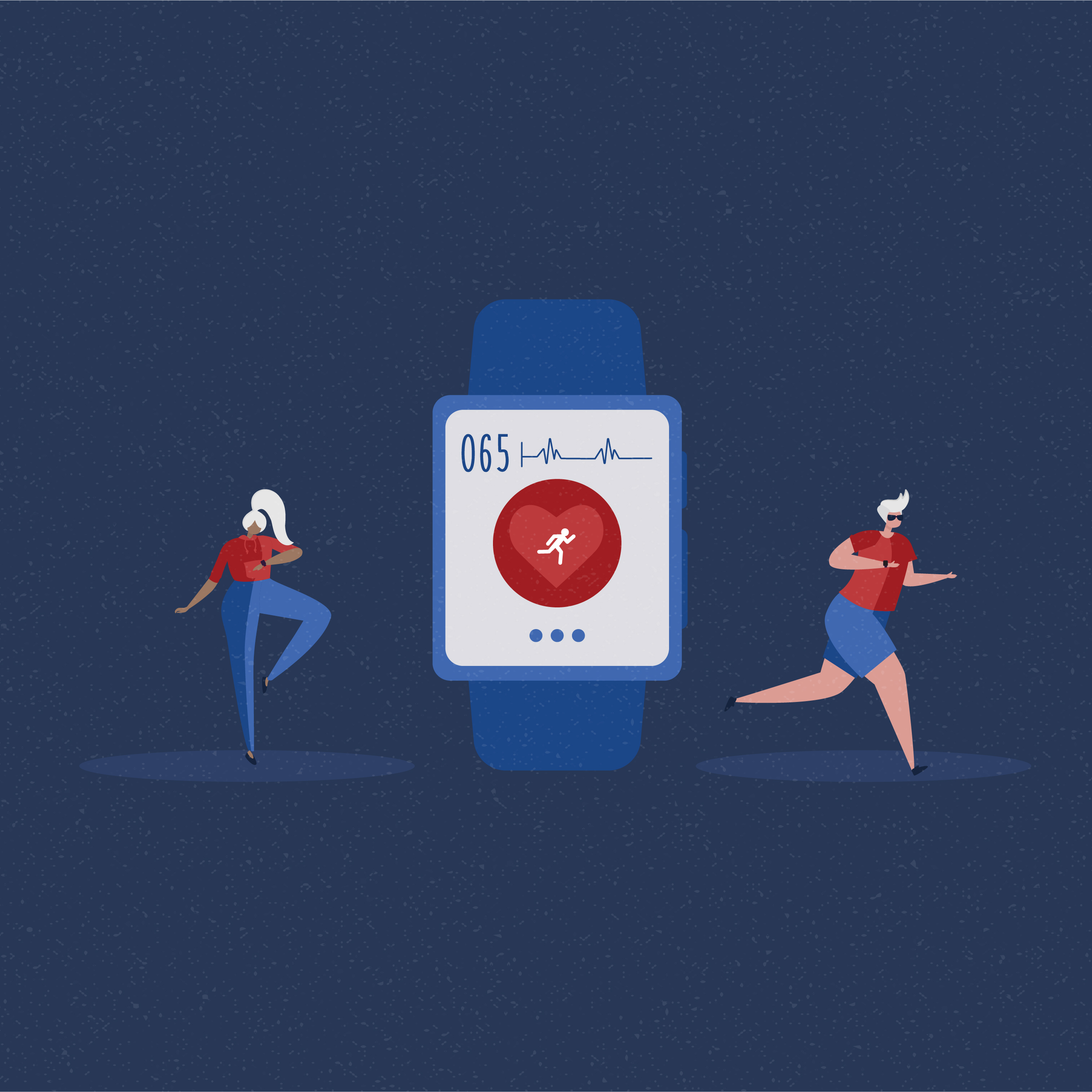Over the last five years, researchers affiliated with the Johns Hopkins Center on Aging and Health have wrangled enormous amounts of data generated by devices similar to Fitbit or Apple Watch to answer questions like, “Does vitamin D help prevent a decrease in the physical activity of older adults?” Now the researchers are making their tools and expertise available to fellow Johns Hopkins investigators who want to incorporate data from wearable activity trackers into their studies.
“Wearable devices can collect hundreds of observations per second,” says Jacek Urbanek, an assistant professor in the Department of Medicine’s Division of Geriatric Medicine and Gerontology. “That results in high-density streams of big data representing characteristics of physical activity, sleep, mobility and more.”
Urbanek and Jennifer Schrack, an associate professor in the Department of Epidemiology at The Johns Hopkins University who has a joint appointment at the Sidney Kimmel Comprehensive Cancer Center, are co-leading the endeavor, called the Accelerometry Resource. The name comes from the instrument inside a wearable activity tracker that senses and measures movement: an accelerometer.
Along with managing data processing (transfer, cleaning, storage and analysis), the Accelerometry Resource can assist with study design and selection of devices, proposal writing, training for study personnel, writing operating procedures manuals, and reporting and interpretation of results.
Compared to laboratory assessments to quantify the amount of exercise someone gets, measurements from wearables are objective and comprehensive, says Urbanek. Plus, the information can be obtained remotely, which is beneficial for people who face challenges getting to a clinical facility for an assessment.
“We can send the device to participants, they put it on and then go about their life for a number of days,” he says. “When finished, they send the device back to our reading center, where the data is processed and analyzed.”
For one large study — the Multicenter AIDS Cohort Study (MACS), now a combined cohort study called the MACS/WIHS (Women’s Interagency HIV Study) — information from wearables helped determine that people with HIV have lower activity levels than people who do not have HIV. Based on this information, researchers can test interventions like using exercise coaches to increase physical activity for people with HIV.
Urbanek says his team’s efforts with nine large, multicenter, longitudinal studies and clinical trials provide unmatched experience in using wearables. In total, the team has collected and processed multiple days of observations of over 11,000 research participants. Soon, it will expand its support to include wearable ambulatory electrocardiography monitors and implantable blood glucose monitors for biomedical research.
“Without dedicated infrastructure and procedures, collecting data on even 100 individuals might be challenging due to the novelty and complexity of wearable technology,” says Urbanek. “By implementing standards and creating tools, we’ve been able to significantly scale up and reduce costs so processing thousands of participants is attainable.”
For more information, visit the Accelerometry Resource.

